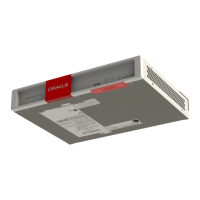DRAFT
Proprietary and Confidential
58 Acme Packet 1100 Hardware Installation Guide
GLOSSARY
IETF — Internet Engineering Task Force is the main standards organization for the
Internet.
IP — Internet Protocol is the method by which data is sent from one computer to
ano
ther on the Internet.
LED — Light Emitting Diode is an electronic device that lights
up when electricity is
passed through it.
LAN — Local Area Network is a group of computers and associated devices that
share a common
communications line within a small geographic area.
LOS — Loss of Signal occurs when the signal level
falls below an acceptable level.
LOS is a physical layer error and typically results in an alarm.
mSATA — Mini Serial Attachment (mass storage device
aka solid-state disk)
NIC — Network Interface Card is an expansion board you insert into a computer so
t
he computer can be connected to a network.
PCI-E — PCI Express
PSTN — Public Switched Telephone Network
QoS — Quality of Service is a networking term that refers to the capability of a
ne
twork to provide better service to selected network traffic over various
technologies.
RAM — Random Access Memory is a type of
computer memory that can be accessed
randomly. RAM is the same as main memory.
ROBO — Remote Office/Branch Office
RS-232 — Recommended Standard 232 is a standard interface approved by
the
Electronic Industries Association for connecting serial devices.
RJ45 — Registered Jack 45 is an eight-wire conn
ector commonly used to connect
computers onto a LAN.
SBA — Survivable Branch Appliance
SSD — Solid State Disk
SNMP — Simple Network Management Protocol is a set of protocols used for
man
aging complex networks and network devices.
Telnet — Telnet is a standard terminal emulati
on program that allows remote login
and connection to systems/servers on a network. Telnet uses a single TCP/IP
network connection to provide this remote login, control, and communication
functionality.
TCP — Transmission Control Protocol provide
s a reliable stream delivery and virtual
connection service to applications through the use of sequenced acknowledgment
with the retransmission of packets when necessary.

